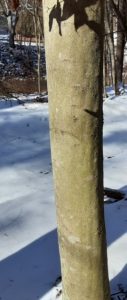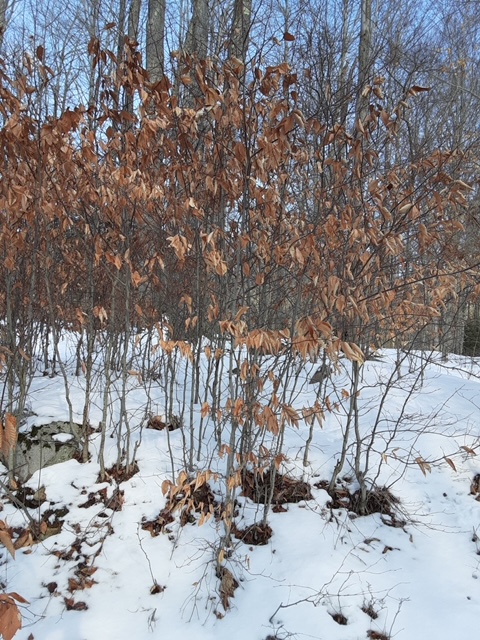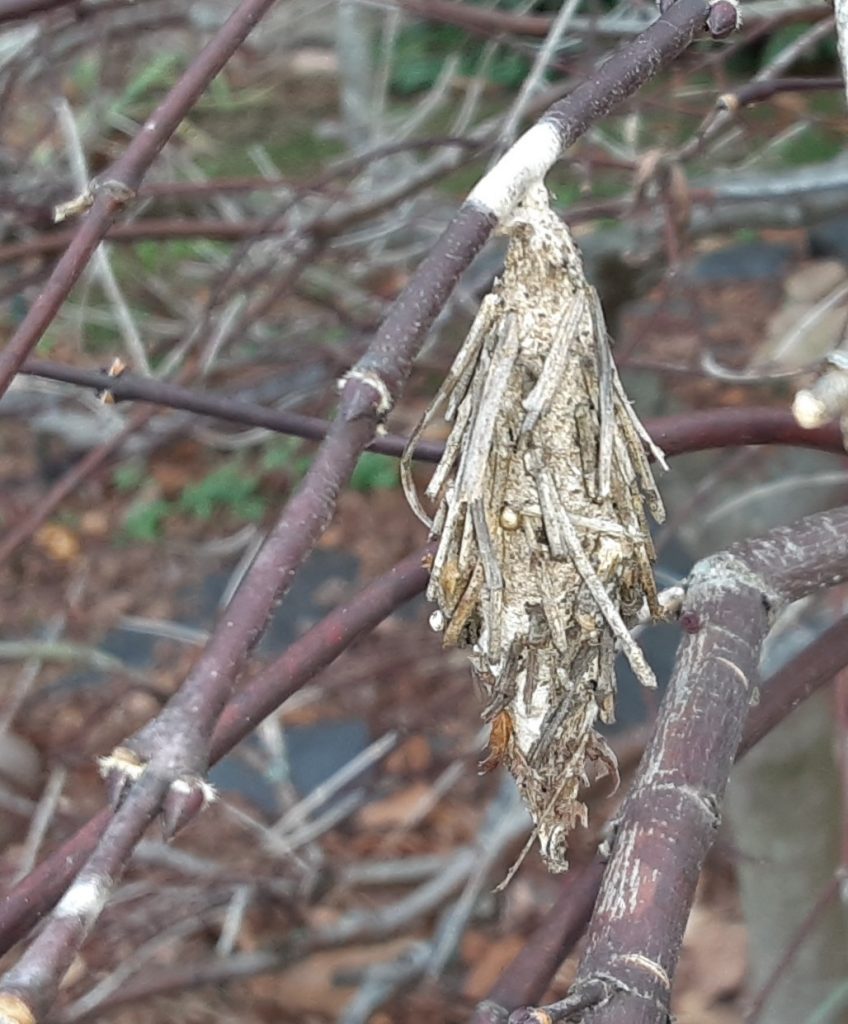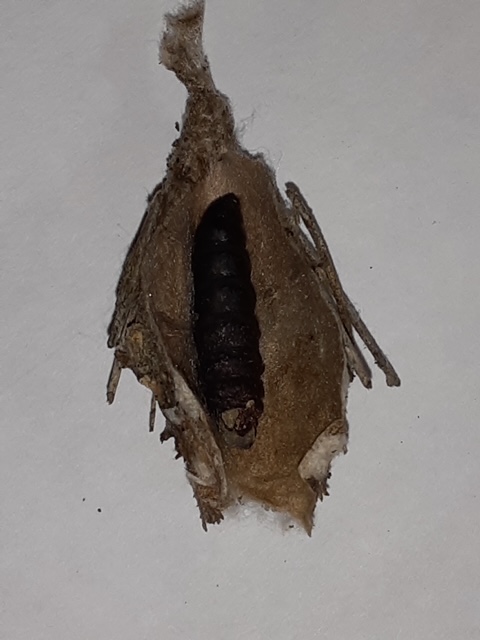By: Susan Sprout

American Beech
Our native beech trees are a standout in the woods around here, with or without leaves! Several references use the phrase “elephant-legged beeches” to describe the smooth, silvery-gray bark of mature trees, as well as the diameter of their trunks. Not elephant trunks, silly!
During winter months, young beeches are excellent examples of marcescence, the retention of dried, dead leaves. Their dull, greenish-blue leaves grow up to five inches long during the growing season. In fall, they turn yellow and brown and remain attached to gracefully slender twigs bearing new, pointy buds for spring. Look for their leafy groupings along forest roadsides.
They are shade tolerant, but slow growing, taking ten years to grow two feet tall in northern PA. They compensate for slow growth-rate with longevity: three lucky beech trees are listed in the PA section of Monumental Trees, all over 200 years old.

When colonists arrived here, they recognized our species as being related to their European beech back home and knew they typically grew on moist, well-drained slopes and rich bottomlands – perfect places to make their new farm fields. Many of our older and taller beeches, which can grow up to eighty feet, fell to their axes.
Bagworm
An intriguing find on deciduous and evergreen shrubs and trees during the winter months is the cocoon of the Bagworm moth. For you fly fishermen and women, it resembles a much larger 1 1/2 to 2 1/2 inch version of the camouflaged caddisfly case, except attached to tree branches instead of creek rocks!

Bagworm Moth Cocoon
This species of caterpillar is a serious pest that can cause defoliation and death of shrubs and trees.
The cocoon pictured was located on a small Japanese maple and shows a hideaway covered with leaf stems and tiny branches looking like a little pinecone. The tiny, just-hatched caterpillars of this moth species will balloon out of the bag on silky cords and begin making their own protection in late May or early June, crawling along with just their heads and first pair of legs exposed. They will feed and expand the length and thickness of their bag by adding fresh green plant material near the head-end for about three months until they have matured.
The bags will look different depending on the host plant. At that time, the larvae pupate for 7 to 10 days. Females will never leave their bags because, as adults, they lack wings and legs. All they do before dying is develop from 300 to 1,000 eggs, laying them inside or retaining them in their bodies for overwintering. Adult male moths do have wings, and thither may they fly to female bags insuring the next generation (one per year in PA).

This species of caterpillar is a serious pest that can cause defoliation and death of shrubs and trees, depending on the severity of the infestation. It is best to detach found examples and place them in soapy water.
Find out what’s underfoot with NPC member and environmental educator, Susan Sprout! Catch up on past issues of Underfoot: Introduction & Bloodroot, Trout Lily & Coltsfoot, Blue Cohosh & Dutchman’s Breeches, Ground Ivy & Forget-Me-Nots, Goldthread & Wild Ginger, Common Mullein & Sweet Woodruff, Aniseroot & Butterfly Weed, Myself , Jewelweed & Soapwort, American Pennyroyal & Great Lobelia, Boneset & Common Ragweed, Pokeweed & Blue Chicory, Prickly Cucumber & Wintergreen, Beech Drops & Partridge Berry, Pipsissewa & Nostoc, Witch Hazel, Plantsgiving, Black Jetbead & Decorating with Winterberry, Wild Bergamot & Bald Cypress Tree, Galls & Bittersweet.


Wonderful information
Thanks for reading Hallie!